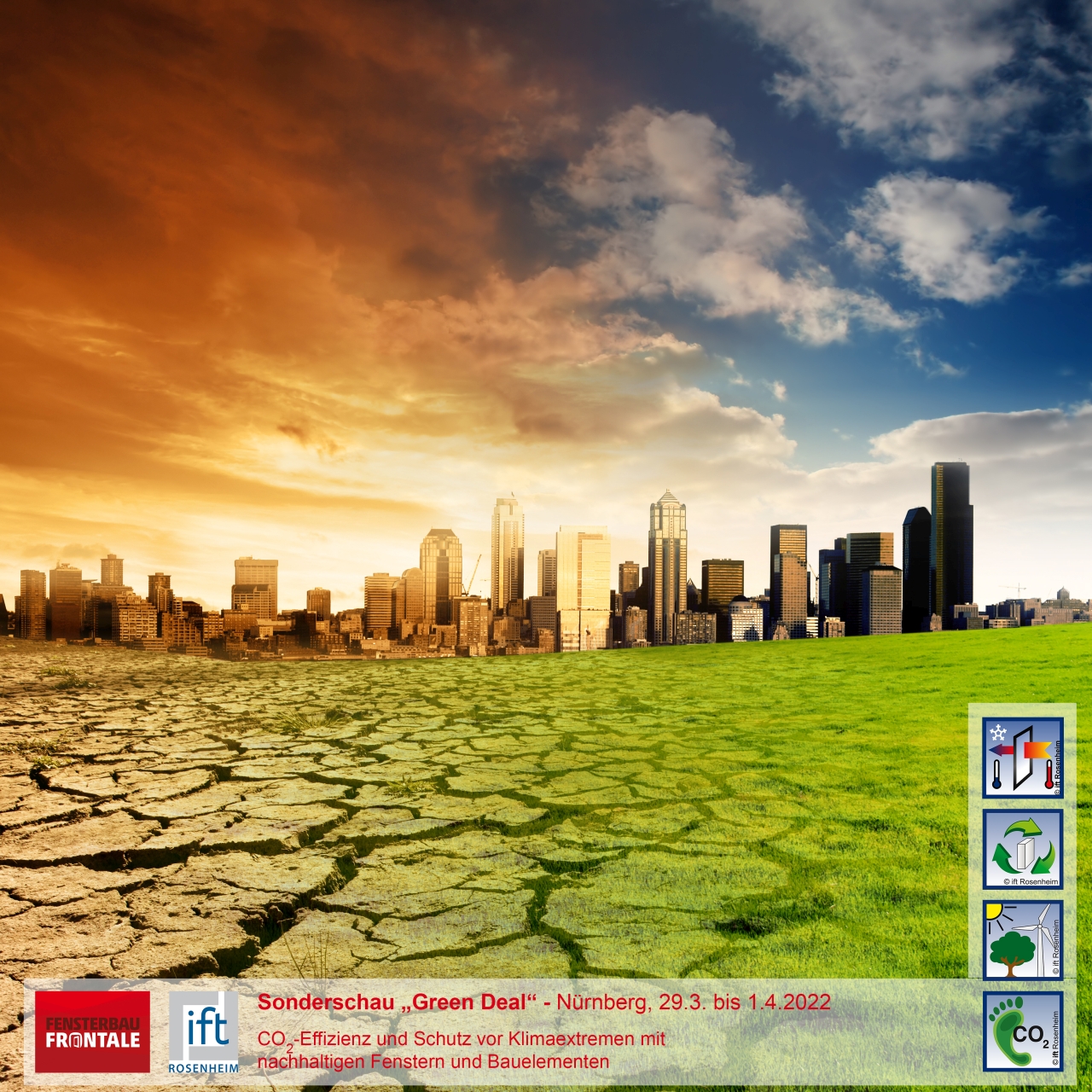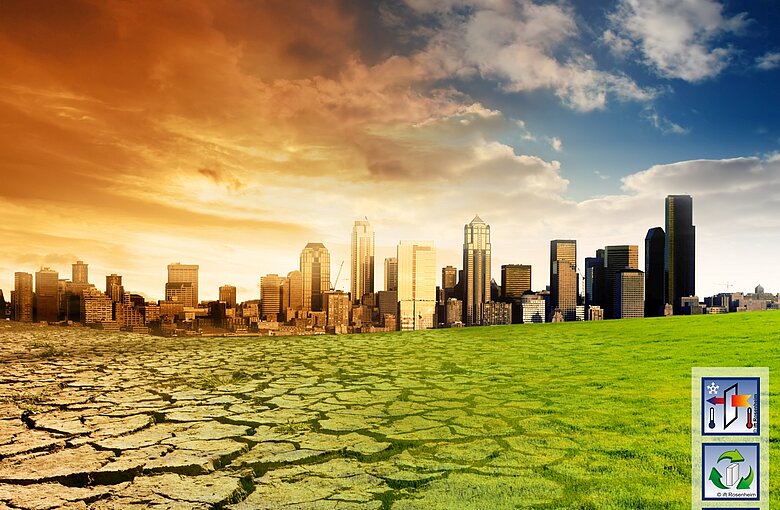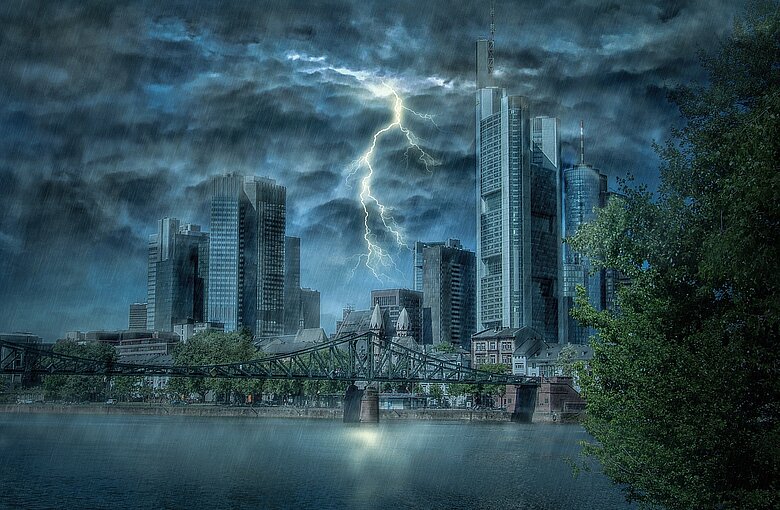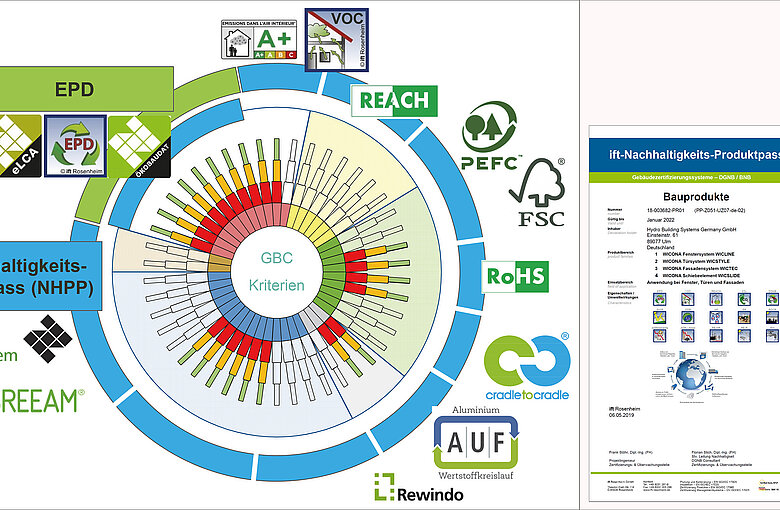Reading time: 3 minutes
CO2 efficiency and protection against climate consequences with sustainable windows and building elements
Climate change is here. It is no longer a matter of limiting climate change through energy-efficient and sustainable building products and technology, but also of protecting ourselves from future climate extremes. The building sector is bringing up the rear when it comes to achieving Germany's climate targets. Politicians know this, too, so that building components and materials will have to meet higher energy efficiency and sustainability requirements in the future. Otherwise, there is a threat of penalty payments to the EU amounting to billions. At the same time, the CO2 footprint of building products is coming more into focus, because the "grey energy" for new buildings and building elements can no longer be neglected. Interested companies are invited to present their innovative products and services as co-exhibitors at the special show "Green Deal - CO2 efficiency and protection against climate extremes with sustainable windows and building elements".
Nuremberg, 29 March - 1 April 2022, World's Leading Trade Fair FENSTERBAU FRONTALE in Hall 1 (1-515)
The damage caused by climate change and the resulting costs are constantly increasing, and the targets of European climate policy can only be achieved through radical savings. The necessary measures must focus much more strongly than before on the building sector, because this is where about 40 % of CO2 emissions originate, and achieving the sectoral reduction of emissions is still a long way off.
The great potential in the fight against climate change could be found in the energy refurbishment of existing buildings. According to analyses by the associations VFF and BF, over 250 million old window units with glass without a low-E coating are waiting to be replaced. This could save more than 14 million tonnes of CO2 annually. That would be 50 % of the 28 million tonnes that would be necessary, according to dena (Deutsche Energie-Agentur GmbH), to achieve the Climate Protection Plan 2030 for the building sector.
For this, politicians must develop instruments such as a replacement obligation, stricter energy requirements and attractive subsidy programmes. In this context, however, the CO2 footprint of building products is coming more into focus, because the "grey energy" for the construction of new buildings has a large share and cannot not be neglected. Politicians are also aware of this, so that building elements and building materials must become more CO2-efficient and should have higher proportions of renewable raw materials and recycled materials. In addition, protection against climate extremes must also be considered. Building elements must therefore protect against heat waves, floods, hurricanes, but also against unexpected cold spells with large amounts of snow.
In consequence there are great opportunities for windows, doors, façades, sun protection, decentralised ventilation systems and other building elements and materials. The following topics will therefore be presented at the "Green Deal" special show:
- reduction of CO2 emissions and improvement of the energy efficiency of building materials, building elements and buildings,
- products made from renewable raw materials and a high proportion of recycled materials,
- technologies to simplify energy-related renovation (serial refurbishment/energy-sprong principle),
- products and constructions that improve sustainability in accordance with the "cradle to cradle" principle and with good maintenance, care and disposal concepts,
- green facades to improve air quality and microclimate,
- adaptive solar shading systems that protect against heat waves and reduce the energy consumption of air-conditioning units,
- protection and resilience against climate extremes such as floods, tornadoes and hailstorms,
- decentralised ventilation systems for night cooling and natural fresh air supply with minimal energy consumption,
- digital control systems to minimise CO2 emissions and improve living comfort,
- surfaces that do not heat up so much when exposed to solar radiation and thus protect the building elements from damage.
Companies can apply with innovative products and services for a presentation as co-exhibitor at the special show "Green Deal" by ift Rosenheim and NürnbergMesse.





